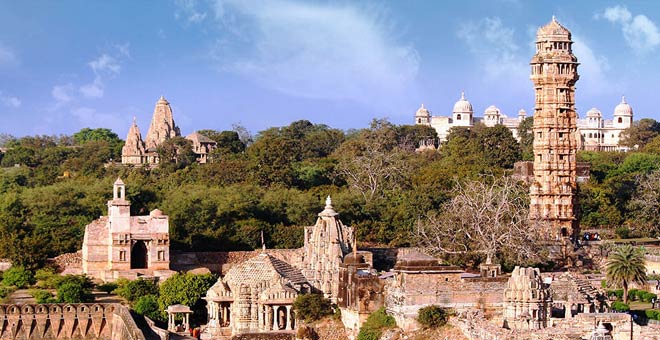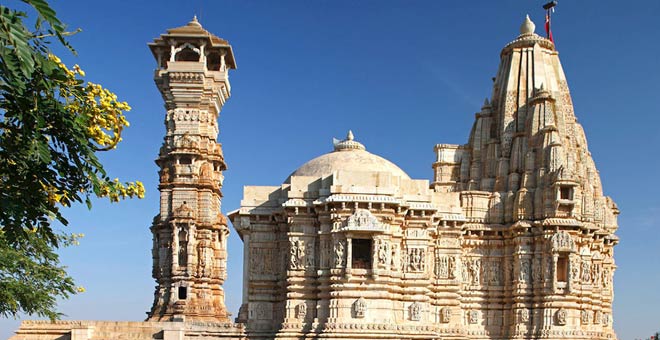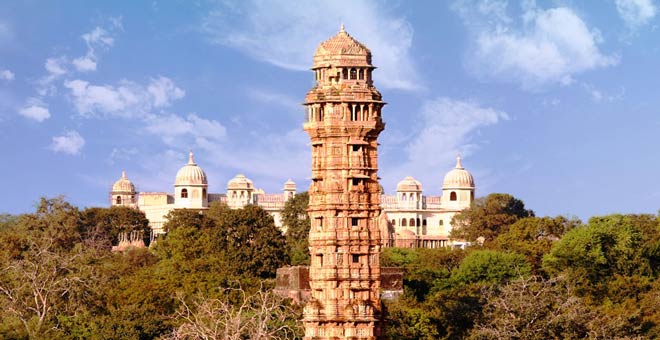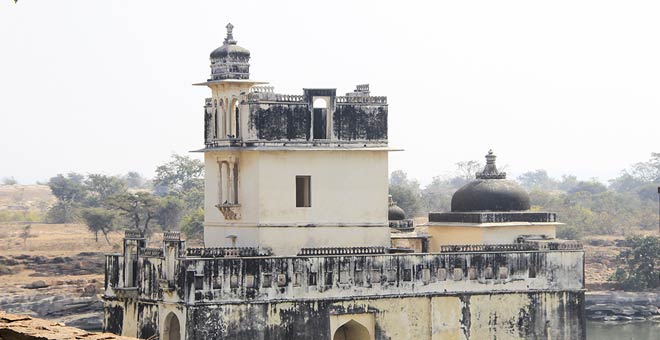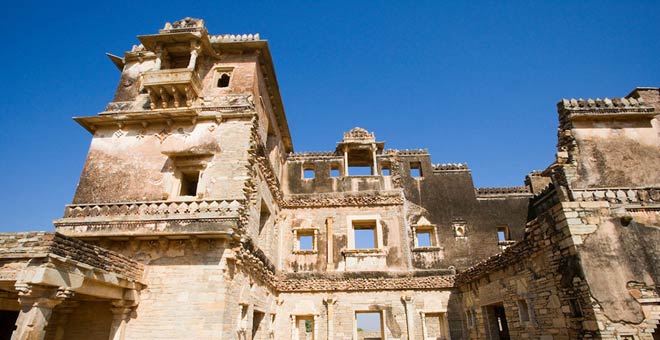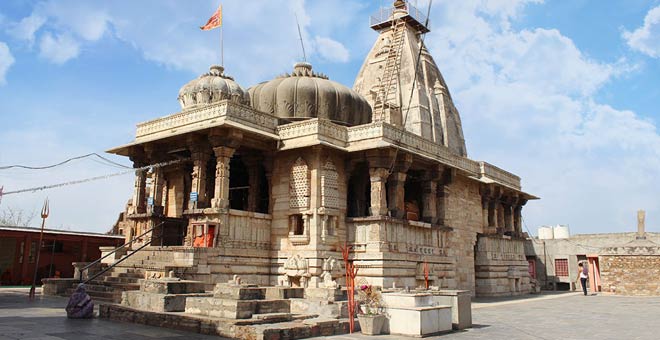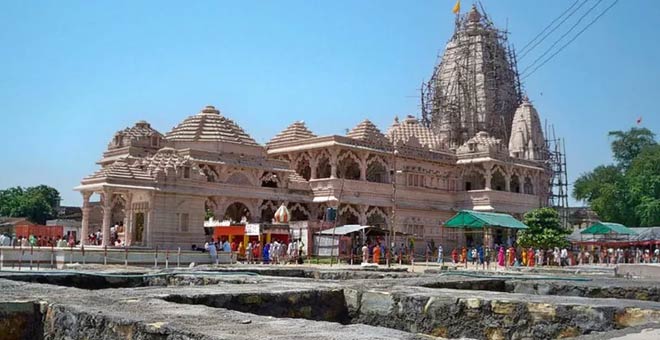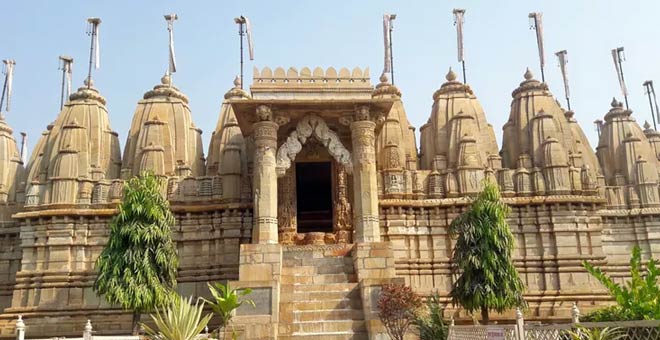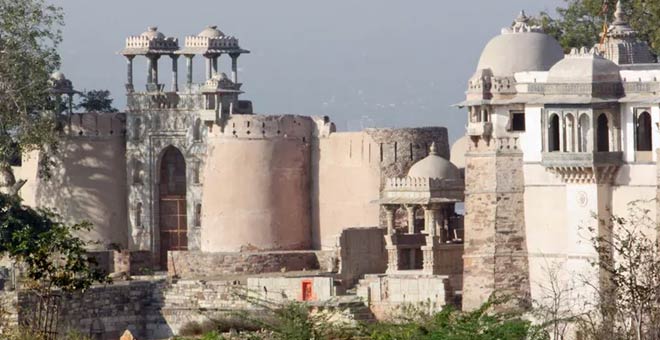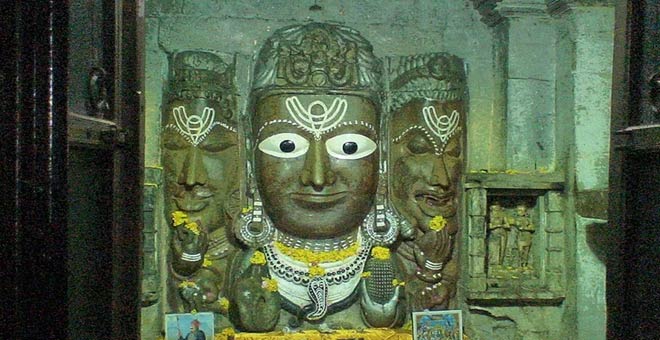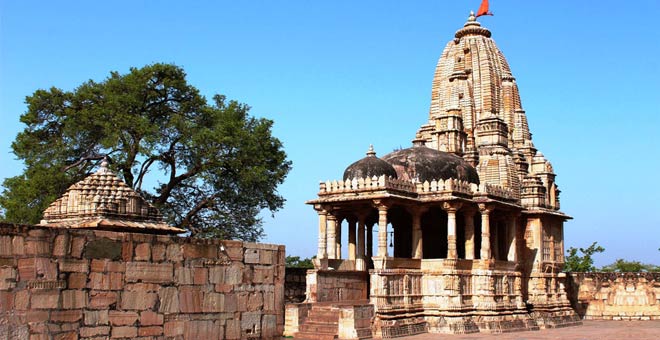Vijay Stambh Chittorgarh
Vijay Stambha, also known as victory tower, is a piece of resistance of Chittorgarh. It was constructed by the king of Mewar, Rana Kumbha to celebrate his triumph over the combined forces of Malwa and Gujarat led by Mahmud Khilji, in 1448. The mighty tower was constructed between the period of 1458 and 1488 and is so tall and massive that it is visible from any part of the city. Hence, the entire town can be viewed from here.
The interior and exterior are delicately carved showing Hindu deities of mythological characters with names. The inscribed slabs in the uppermost storey contain the genealogy of the rulers of Chittaur from Hamir to Rana Kumbha. The entire tower is covered with architectural ornaments and inscribed images of gods and goddesses, seasons, weapons, musical instruments, etc. The inscribed sculptures are a veritable textbook of Hindu iconography. The portraits of the architect of this tower Jaita and his 3 sons, Napa, Puja, and Poma are carved on the fifth floor of the tower.
The Tower has nine storeys, each of the nine storeys are distinctly marked with openings and balconies at every face of each storey. The 157 circular and narrow steps which lead to the terrace is also a noticeable feature of the architecture. After reaching the top of the tower, anyone can see a great and unique view of the whole city. The uppermost floor has been sealed off and is no longer accessible to visitors.
The area around the Vijay Stambh is littered with an impressive number of further remains, including a pair of monumental gateways and a number of florid temples, including the superbly decorated Samiddhesvara Temple, whose shrine houses an image of the Trimurti, a composite, three-headed image of Shiva, Brahma and Vishnu.
Several temples line the route, but the most impressive monument is Kirti Stambh. The inspiration for the tower of victory, this smaller Tower of Fame is 22 meters high and was built by a Jain merchant Jeeja Bhagerwala during the reign of Rawal Kumar Singh (1179-1191) for the glory of Jainism.
In the night, colorful lights increase its beauty. When reaching near Vijaya stambh (Tower of Victory) and viewing it from bottom gives great feelings of old-time architecture and joy of victory. So really it’s a great piece of the monument and must be included in the great architecture of India.
About Vijay Stambha
Vijay Stambha, also known as victory tower, is a piece of resistance of Chittorgarh. It was constructed by the king of Mewar, Rana Kumbha to celebrate his triumph over the combined forces of Malwa and Gujarat led by Mahmud Khilji, in 1448. The mighty tower was constructed between the period of 1458 and 1488 and is so tall and massive that it is visible from any part of the city. Hence, the entire town can be viewed from here.
Vijay Stambh is a dedication to Lord Vishnu and has intricate carvings and sculptures of Hindu Gods and Goddesses. The internal part of the tower has carvings of weapons, musical instruments, and other tools used in that period. It is an excellent example of religious pluralism practised by the Rajputs. The highest storey consists of an image of the Jain Goddess, Padmavati. Also, the word Allah is carved nine times on the third storey and eight times on the eighth storey, all in Arabic. The magnificent tower is a piece of architecture that is frequented by tourists visiting the city and makes them feel proud of the vibrant history of the country.
Vijay Stambh Architecture
The tower is adorned memorably with Hindu God and Goddess. It is dedicated to Lord Vishnu. Vijay Stambh is a 9 story tower with a height of 37.19 mtr. Made with red sand stone and white marble, this tower has a balcony in each stories.
Filled with inscriptions, images of wepons, musical instruments etc, this tower also has the portrait of Jaita, architect of this tower with his 3 sons – Napa, Puja and Poma. Tower is one of the most attractive part in Chittorgarh Fort.
How To Reach Vijay Stambh or Victory Tower, Chittorgarh
By Road: Vijay Stambh is located in the Chittorgarh Fort at a distance of 5 km from centre of Chittorgarh on Fort Rd. One can easily reach here by rickshaw, local bus or taxi or by walk.
By Rail: Vijay Stambh is well connected through nearest Chittorgarh Railway station (6 km) to major cities railway stations like Delhi, Agra, Mumbai, Chennai, Bikaner, Pali, Jaipur, Ahmedabad.
By Air: Vijay Stambh can be reach through nearest Udaipur airport (98 km) which is well connected with regular domestic flights to Delhi, Mumbai.
Tourist Attractions in Chittorgarh
Chittorgarh’s (Chittor) crowning glory is the gargantuan fort that looms over this southern Rajasthan state. Chittor goes down in Rajasthani folklore for its Rajput kings of old who exhibited massive levels of valour and courage while defending the area. Travellers here are not just regular tourists; backpackers looking to experience a different side of Rajasthan, architecture and history buffs, and crowds of pilgrims make their way to Chittor, all through the year. Besides the Chittor Fort, a curious traveller can explore a variety of palaces, temples, tanks, and wildlife sanctuaries. The nearest airport is at Uadipur and Chittor is a 70km car ride away. The Chittorgarh Railway Station is the nearest railhead to the city. The capital of the former kingdom of Mewar has a story to tell in every historical structure. Here’s an eclectic list of all the places to visit in Chittorgarh.
Chittorgarh Tour Packages
Chittorgarh is known for a number of forts and palaces with historical significance. Chittorgarh tour packages are in great demand as large numbers of tourists wish to explore of a number of attractions in the city. These tour packages comfortably take the tourists to a number of famous places in town.
-
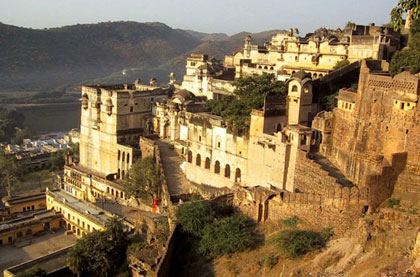
Chittorgarh 5 Days Tour
Duration : 04 Nights / 05 Days
Destination Covered : Kota - Bundi - Chittorgarh -

5 Days Jaipur Chittorgarh
Duration : 04 Nights / 05 Days
Destination Covered : Jaipur - Ranthambore - Chittorgarh - Udaipur -
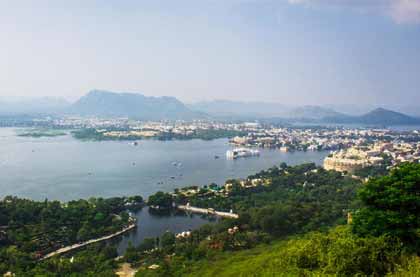
Bundi Chittorgarh 5 Days
Duration : 04 Nights / 05 Days
Destination : Ranthambhore, Bundi, Chittorgarh, Udaipur, Ranakpur, Jodhpur -
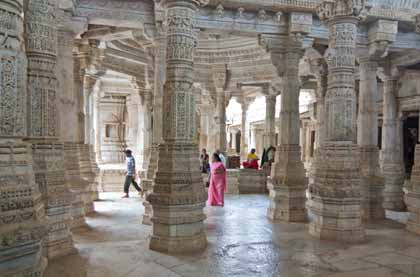
Chittorgarh 9 Days Tour
Duration : 08 Nights / 09 Days
Destination : Jaipur, Ranthambore, Chittorgarh, Udaipur, Ranakpur, Jodhpur, Jaisalmer -
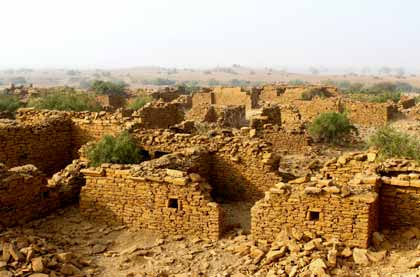
Pushkar Chittorgarh 8 Day
Duration : 07 Nights / 08 Days
Destination : Jaipur, Pushkar, Chittorgarh, Udaipur, Jodhpur, Jaisalmer/Desert -
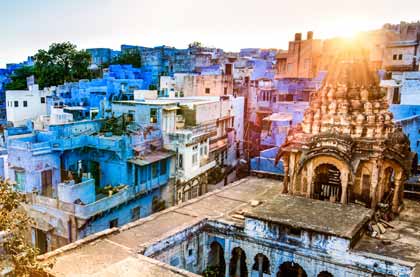
Jaipur Chittorgarh Udaipur
Duration : 07 Nights / 08 Days
Destination : Jaipur, Chittorgarh, Udaipur, Kumbhakgarh, Ranakpur, Jodhpur, Jaisalmer -
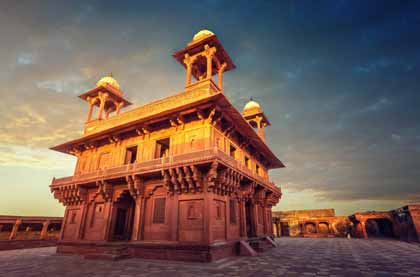
Jodhpur Ranakpur Udaipur
Duration : 08 Nights / 09 Days
Destination : Jodhpur, Ranakpur, Udaipur, Chittorgarh, Jaipur, Fatehpur Sikri, Agra, Delhi -
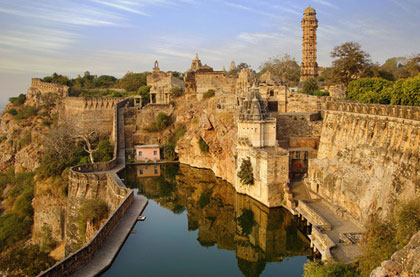
Delhi Mandawa Bikaner Tour
Duration : 13 Days / 12 Nights
Destination : Delhi, Mandawa, Bikaner, Jaisalmer, Jodhpur, Mountabu, Ranakpur, Udaipur, Chittorgarh, Pushkar

 +91 9799050299
+91 9799050299  +44 (0)7900 602340
+44 (0)7900 602340 


